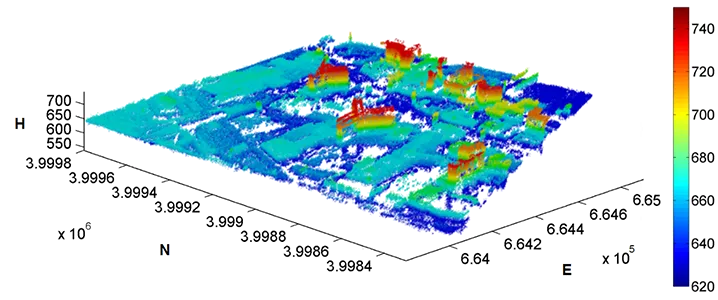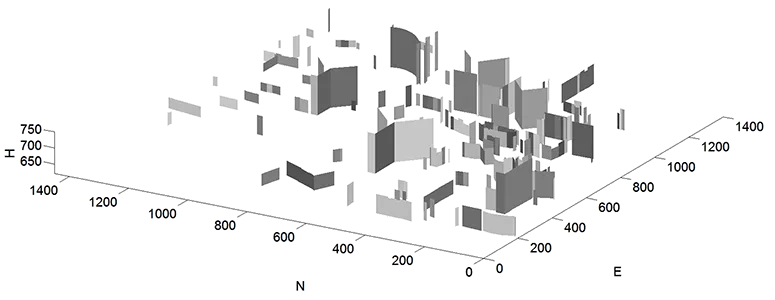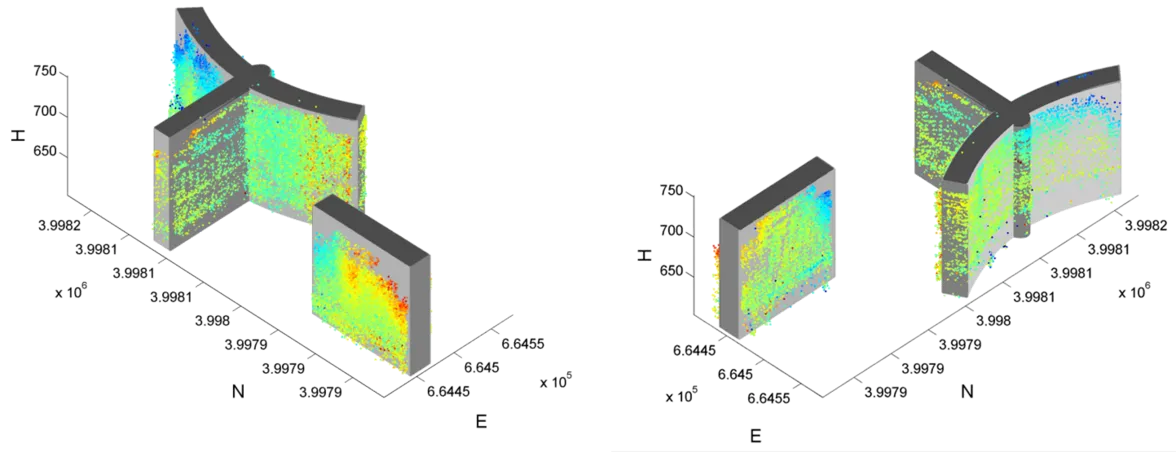Object Reconstruction Using TomoSAR Point Clouds
Project Leader
Xiaoxiang Zhu
Contact Person
Xiaoxiang Zhu, Muhammad Shahzad
Cooperation Partners
German Aerospace Center (DLR)
Technical University Munich (TUM)
From a stack of SAR images, differential SAR tomography retrieves elevation and deformation information (linear, seasonal, etc.) of possible multiple scatterers inside a single SAR image pixel. It is so far the most competent interferometric SAR methods for uran monitoring. Our TomoSAR software: Tomo-GENESIS produces 4-D point cloud of the illuminated area with point density of about 1 million points/km2. Please find more detail in the "4D City" project.
Object reconstruction from these high quality TomoSAR point clouds can greatly support the reconstruction of dynamic city models that could potentially be used to monitor and visualize the dynamics of urban infrastructure in very high level of details. Motivated by this, Figure 1 presented the first result of building façade reconstruction from TomoSAR point cloud. Only a single view (ascending stack) was used in this study, and therefore, only one side of the building façades can be reconstucted.


Figure 3 shows the complete reconstructed 3-D model of Bellagio Hotel in Las Vegas on which the amplitude of seasonal deformation is projected to show the periodic movement of the whole façade. In this work, both ascending and descending TomoSAR point cloud were used. The basic idea of such reconstruction is to reconstruct 3-D building models via independent modeling of each individual façade to build the overall 2-D shape of the building footprint followed by its representation in 3-D.
